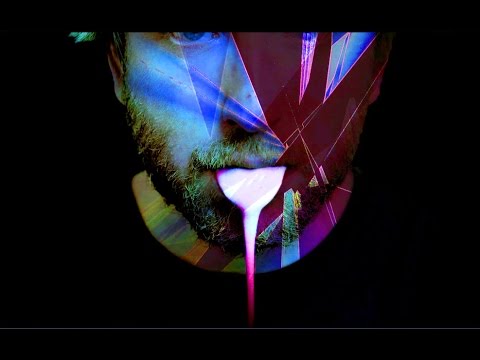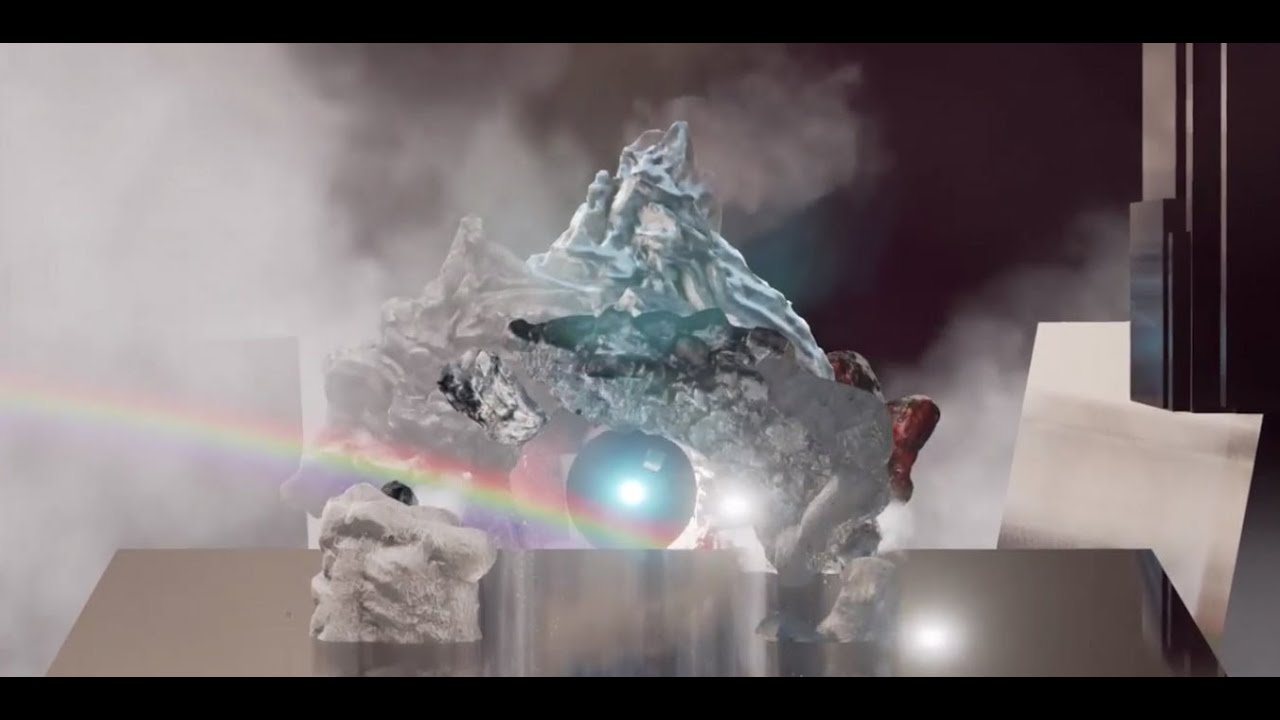There are a multitude of methods that musicians can utilise to create and sculpt sound. For the observer some are more simple to comprehend than others. It will always be easier for someone to describe a person playing a traditional acoustic instrument than it would to explain the inner workings of a modular synth for example. And how important is it anyway? For most listeners all that matters is whether or not the created sounds move them; whether the noise stirs the emotions.
Gum Takes Tooth have been tweaking sonic space for more than five years, delivering two LPs along the way in the form of Silent Cenotaph in 2011 and Mirrors Fold in 2014. They are a symbiosis of traditional band and technology, a visceral harmony of man and machine. When observing them play however it can still be confusing to deduce what exactly is going on underneath the noise. It is clear that they have an unbelievably talented drummer, but what is creating all the electronics? Is it synths? Samples?
So how does it all work? In a nutshell, the drums have triggers attached to them which send a go signal when Tom Fug hits them. These signals then pass into an instrument the band designed themselves allowing Jussi Brightmore to decide what they become; converting, tweaking and tailoring them to be realised as different sounds. Essentially everything that you hear is emanating from the drum kit initially prior to being passed to machine and then back to a human who controls what it sounds like and how it alters over time. It is impressive to think about the depth of ingenuity behind it all, but that means nothing when compared to simply listening to the music which is produced via this process. This is visceral, primitive and completely emotive without any hint of rigidity that can sometimes occur with synthesized electronic music.
I took a chance to sit down with the band to get an idea of how they developed their creative process, where their hearts lie musically and to find out about their latest video ‘Bone Weapon’.
I don’t think a lot of people understand the mechanics behind how you create your music. Over the years I’ve seen some pretty odd comparisons in reviews
Tom Fug: MxPx?
Exactly. Do you think that in a way it has been a help that it is hard to categorise and label Gum Takes Tooth because it isn’t your typical guitar, drums, vocals and bass band?
TF: As a band it feels like a good thing that it is hard for someone to find an easy comparison for what we do, as it means that we are doing something a little bit different and new. I don’t know if it is necessarily beneficial for us with reviews however, as sometimes you’ll get some really bizarre reference like MxPx and someone will read that and think that is what it’s like.
Jussi Brightmore: I think our intention is sometimes misconstrued and in some instances, if we are playing on a bill with metal bands or whatever, someone watching might just latch on to the shouting and the noise. It might be hard to realise where the sounds are coming from, people thinking, ‘Is it a backing track? It must be a backing track.’ We don’t really have any preconception of how someone should perceive it, but how we create the sounds is through Tom triggering signals from the drums, I then manipulate the signals that are produced from the triggers via an instrument that Tom created. The key thing is that Tom and I are both manipulating the same instrument at the same time, no one follows each other it is all simultaneous.
I guess from the audience’s perspective it may seem that Jussi is playing synths and Tom the drums, yet what is going on is so much more complex. What drove you to want to follow the path you did when starting the band?
TF: Well a friend gave me this old drum synthesizer, and it worked in this particular way. So I got some drum triggers and thought it sounded pretty good, then we put it through distortion pedals and we thought it sounded really cool. This was when we were doing our old band Infants. We’d booked a recording session in our friends house and two of the band couldn’t make it so Jussi and I went in thinking that we would record in this manner and the other guys would add something on top of what we had done. For some reason this never happened and shortly after Infants were offered a gig that some of the band couldn’t do, I suggested to Jussi that we should do this new music that we had come up with as a live band. We had a couple of rehearsals and then played live as Gum Takes Tooth.
Over time the limitations of that initial setup proved to be too much, so we set about designing our own instrument with computers to expand on what we had done.
So was that using a proprietary piece of software that you then tweaked?
TF: No, it’s using a programming environment that we then tailored to our needs.
JB: I think it’s really important to say that this all just happened, it wasn’t intricately planned. It’s all about what comes out of our interaction which is directly filtered through the technical aspects and deliberate limitations of this instrument that we have made.
TF: It’s quite nice having certain limitations working the way that we do. We can’t write songs at home ourselves and then come into the studio with them for example, but we can come in with ideas of how we want something to sound when we play. Quite often we will come in with ideas of something, thinking that perhaps it is similar in approach to what another band has done, but by the time we filter everything through the process it sounds nothing like it at all and just like Gum Takes Tooth.
JB: It’s important to reiterate that “it” is a process rather than a machine. I guess what makes the band different is the process, the way we create. We have worked this way for so many years that it is not a barrier to anything we want to do. I mean, historically the limitations of technology can have a profound effect on how the music that relies on it turns out. The classic example being the Roland 303. A lot of the reason many of those acid synth sounds have that spooky and way out quality is because it was so confusing to program that there was a lot of chance involved, and in a way that randomness is what gave it character. Working in tandem with this instrument we’ve created is what creates the music that is Gum Takes Tooth.
Of course, all this stuff that we are talking about, what it is and how it’s made, although it is a concern to us you’d never want it to be the main part of the experience of the music for the listener. All music should be cut free from the technicality behind how it was created. The whole point is to make the music elicit a primal response rather than a cerebral one.
I was a guitarist from the age of 13, but lost the use of my left arm for a little while following a bike accident. That was right when we were starting up with Gum Takes Tooth. I never really got back into playing guitar since as I have just found our process is a more effective way for me to channel all the different influences I have to then become this technicolour mush of sound.
You seem to be equally at home playing noise or rock shows as you do for playing to dance music crowds, is that accurate?
TF: I think a lot of that comes down to where we came from, the music that we associated with I guess were more commonly rock bands, but you could also equally find us in a festival where we are the only band that uses live drums. I am happy that we’ve managed to be able to exist in both worlds without being a traditional crossover band, so no one is saying“it’s electro rock” or whatever. I guess it goes back to what we were talking about earlier, the difficult to categorise thing, I think that helps allow us to straddle both sides.
JB: There’s always been bands that have been the bridge between genres, or have occupied different genres at the same time. I think we’ve liked a lot of those bands, the Screamers for example. It’s what I am drawn to with my listening taste, things that straddle different sounds.
TF: It’s great that we don’t get shoved into one specific genre when it comes to performing live, it’s nice to have the variety.
Can you tell us about the video for ‘Bone Weapon’?
JB: Well it’s the third track that we have done a video for from Mirrors Fold, I think watching them all would probably give someone a pretty good idea about what we do. ‘Bone Weapon’ is a heavier, more rock orientated thing compared to ‘Buried Fires’ or ‘This Perfect Surface’, I guess altogether it gives a good depiction of what we aim to do. Our friend Lucie Red works on videos for well-established artists and over the course of an evening we managed to talk her into doing what would become ‘Bone Weapon’ for us along with Jim Demuth. We had discussed what we wanted in terms of imagery with them, and that we definitely wanted the video to convey the fact that we are a live band.
And you head out on tour soon in France?
TF: That’s right. We are playing six dates in France and one date in Belgium towards the end of February. We’ve also played a gig recently in Bristol as a stripped down electronics-only version of the group, which we enjoyed and will be doing again.
Gum Takes Tooth tour in Belgium and France during February. Mirrors Fold is available via Tiger Trap records




